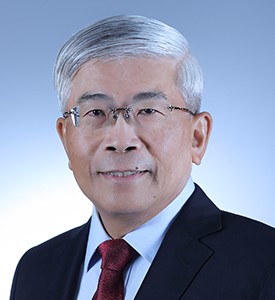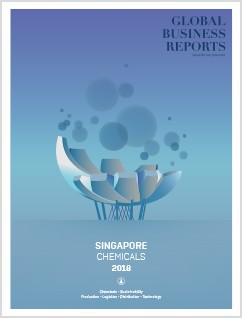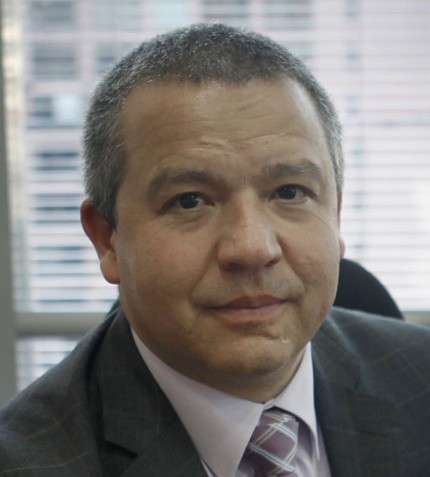
"The new cogeneration plant is expected to improve the Singapore Refinery’s energy efficiency by 4% to 5% and result in a net reduction of 265 kilotons per year of CO2 emissions due to efficiencies gained from a combined cycle power generation process. This emissions reduction is equivalent to removing more than 90,000 cars from Singapore’s roads."
RELATED PUBLICATION
ARTICLES FROM THIS PUBLICATION
- Singapore’s Chemicals Sector is Undergoing a Transformation
- For a Rainy Day: Singapore targets water self-sufficiency
- Manpower Constraints a Persistent Burden for Industry in Singapore
- Singapore’s Chemical Producers: Feeding Asia’s Appetite
- Distribution: Streamlining the Channels
- The Brave New World of Chemicals
- Prosperity or Penury – Singapore's Petrochemicals Industry Faces Challenges to Re-invent Itself
Gan Seow Kee
MANAGING DIRECTOR, EXXONMOBIL ASIA PACIFIC PTE LTD.
Last year, ExxonMobil completed its 84-megawatt cogeneration plant on Jurong island – what was the rationale behind it and how will it help maximize energy efficiency?
The new 84-megawatt cogeneration plant will increase the refinery’s energy efficiency, help reduce emissions and strengthen the facility’s long-term competitiveness. With the completion, ExxonMobil now has more than 440 megawatts of cogeneration capacity in Singapore and is able to meet the majority of its integrated refining and petrochemical complex’s power and steam needs. The additional cogeneration capacity builds on ExxonMobil's interests in more than 100 cogeneration installations at more than 30 locations around the world. It is an example of our commitment to using energy more efficiently. We continue to make strategic investments that help improve our manufacturing competitiveness in Singapore while minimizing environmental impact.
The new cogeneration plant is expected to improve the Singapore Refinery’s energy efficiency by 4% to 5% and result in a net reduction of 265 kilotons per year of CO2 emissions due to efficiencies gained from a combined cycle power generation process. This emissions reduction is equivalent to removing more than 90,000 cars from Singapore’s roads.
What were the reasons behind the recent acquisition of Jurong Aromatics Corporation’s Jurong Island plant?
The plant, one of the largest in the world with an annual production capacity of 1.4 million tonnes, presents operational and logistical synergies for ExxonMobil’s integrated refining and petrochemical complex nearby. As a leading global manufacturer of aromatics, the addition of this aromatics plant to our existing operations in Singapore will help us better serve our customers in key Asian growth markets. We continue to make strategic investments to ensure ExxonMobil is well positioned to meet increasing global demand for chemical products.
Singapore is home to ExxonMobil’s largest integrated refining and petrochemical complex, which has a crude oil processing capacity of 592,000 barrels per day and includes two world-scale steam crackers. Acquisition of the Jurong aromatics plant will increase ExxonMobil’s Singapore aromatics production to over 3.5 million tonnes per year, of which 1.8 million tonnes is paraxylene.
Our growth in Singapore is driven by the expected increase in global demand for chemical products over the next decade of nearly 45%, or about 4% per year, which is a faster pace than energy demand and economic growth. Nearly three-quarters of the increased demand is expected to be in Asia Pacific as a result of its rising prosperity and a growing middle class.
In Singapore’s Year of Climate Action, how is the impending carbon tax likely to impact ExxonMobil?
The risks of climate change warrants thoughtful action. ExxonMobil is taking action by reducing greenhouse gas emissions in its operations, helping consumers reduce their emissions, supporting research that leads to technology breakthroughs and participating in constructive dialogue on policy options.
ExxonMobil understands the need for carbon tax to encourage emissions reduction as we work to address the risks of climate change and meet the world’s growing energy needs. ExxonMobil remains committed to working together with the government to find the right balance between providing affordable energy and products to support human progress, while addressing the risks posed by greenhouse gas emissions and ensuring Singapore’s competitiveness.
ExxonMobil is an industry leader in energy efficiency. We are proactively reducing greenhouse gas emissions with ongoing initiatives to boost energy efficiency at our manufacturing facilities. Here in Singapore, our energy efficiency investments include the three cogeneration facilities at our integrated manufacturing site which supports most of our energy and steam needs.
ExxonMobil also applies a Global Energy Management System (G-EMS) to drive its efforts to manage energy use at its refineries and chemical plants worldwide. G-EMS has enabled ExxonMobil’s to drive towards leading-edge energy efficiency performance. Over the years (2002-2016), our initiatives have led to about a 25% improvement in energy efficiency at the Singapore integrated manufacturing complex.











